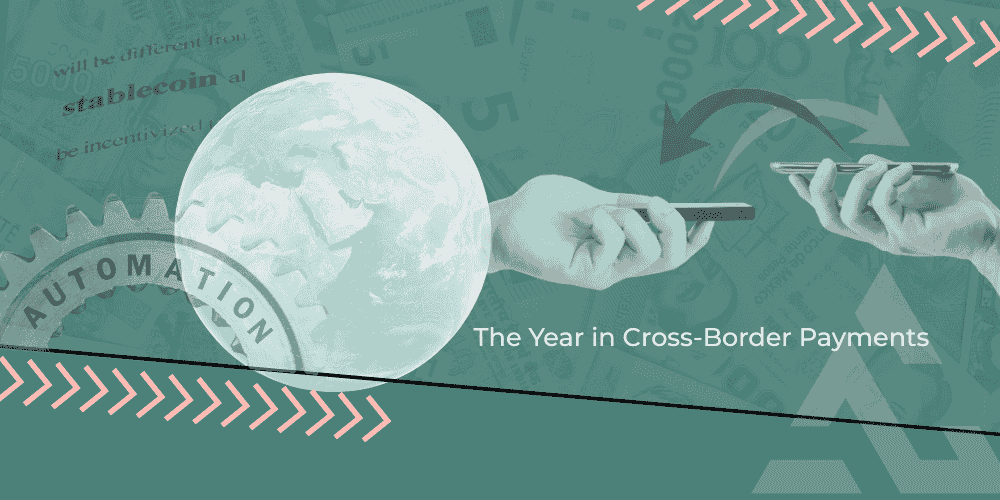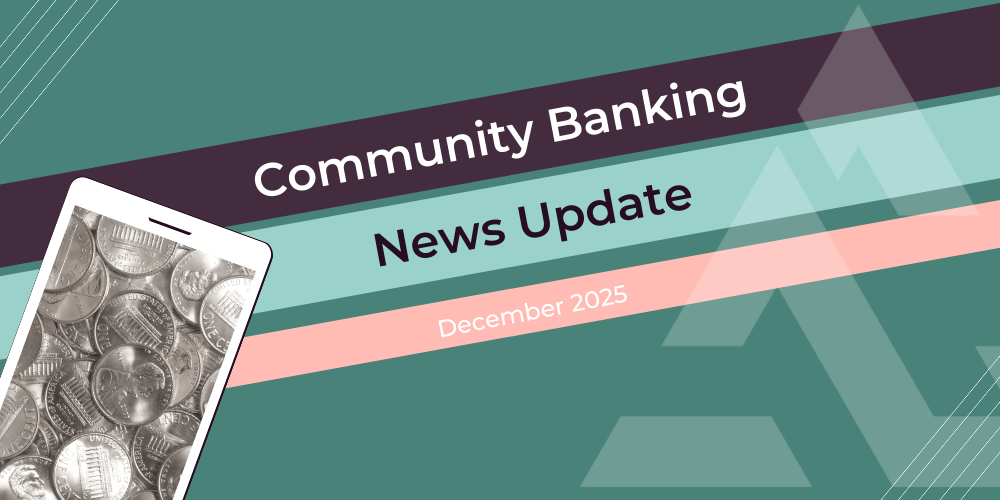The Year in Cross-Border Payments and Correspondent Banking
International wire automation, stablecoins, wallets, and AI reshape global money movement What a pivotal year in cross-border payments. No one...
4 min read
 Daisy Lin, Head of Marketing, Acceleron
:
11/19/24 9:44 AM
Daisy Lin, Head of Marketing, Acceleron
:
11/19/24 9:44 AM

Brandon Oliver is dedicated to helping community banks thrive in a tech-driven world, helping them adopt new technologies that keep them competitive. He is a principal at BankTech Ventures, a venture capital firm investing in new technology solutions to support and advance the community banking sector. His career journey — from market research at JPMorgan to supporting fintech startups at the DCU FinTech Innovation Center — has equipped him with valuable insights into digital transformation in banking. We spoke with him about the intersection of community banking and tech.
It was a bit of a happy coincidence. My background is in market research, private equity, and a few startup ventures. I started at JPMorgan in market research, where I first got a behind-the-scenes look at how banking operates. Later, I co-founded a company focused on helping international clients settle in the U.S., which gave me insight into what customers need from their banks. I then joined the DCU FinTech Innovation Center, where I saw firsthand the challenges and opportunities community banks face in adopting new tech. That experience brought me to BankTech Ventures, where I help community banks access innovative technologies that meet their unique needs.
Banking is an industry that’s ripe — not necessarily for disruption, but definitely for adaptation. Many community banks are still operating on systems that were built over 30 years ago. When you compare that to the tech evolution happening around us, you realize how much opportunity is right in front of us. There’s a lot of excitement about introducing big innovations like generative AI, real-time payments, and even crypto solutions, but it’s essential to recognize where most banks are starting from.
For community banks, the path forward is about providing a “crawl, walk, run” approach — building familiarity with new technology gradually. Start with foundational changes, gain momentum, and grow with the product over time. This might not sound thrilling to those who want to make immediate, sweeping changes, but it’s the reality of the industry. The good news is that there’s an enormous amount of growth potential in these incremental steps, which allow banks to make meaningful progress while staying grounded in practical, scalable advancements. For community banks, it’s about updating infrastructure while staying true to their relationship-focused service model.
A big area of opportunity is in leveraging the customer data that banks already have. Many community banks don’t realize the potential insights sitting in their data, often because it’s spread across siloed systems. Some banks are starting to consolidate this information into data lakes, which gives them a more comprehensive view. By applying AI tools — as my colleague Katie Quilligan likes to call it, using AI as a “digital intern” — banks can start mining this data to better understand and anticipate customer needs, both on the commercial and retail sides. This approach leads to personalization, new marketing opportunities, a stronger digital footprint, and, ultimately, an increased share of wallet. Banks don’t need to reinvent the wheel; they just need to make better use of what’s already there.
Absolutely. Many community banks don’t realize the volume of international payments their clients are making — often through third parties or accounts that the bank doesn’t have visibility into. Take, for example, a lumber distributor based in the Northeast that imports large volumes of wood from Europe and Russia to sell to U.S. contractors. They may use a third-party provider to handle those international transactions, but the community bank managing their main accounts has no insight into the money flowing overseas. Without access to real-time accounting data, the bank misses out on both the revenue from these transactions and the opportunity to deepen its relationship with the customer.
If community banks had the tools to see these types of transactions and process them, they could offer competitive international payment services directly to existing customers, helping streamline processes and potentially offering better rates than third-party providers. It’s often a matter of communication — the customer might not even know their community bank has the ability to process these payments, and the bank doesn’t know to offer it. It’s not just about attracting new clients with international payments; it’s about making the bank indispensable to the businesses they already serve, offering a complete package of services that builds loyalty and reduces the risk of losing accounts to competitors.
Read more about offering international payments to generate non-interest income and serve customer needs:
Why do you believe community banks need to re-establish their identity in today’s digital world?
Community banks have always been more than just financial institutions — they’re small businesses that understand their local customers’ unique needs. Historically, they’ve served as advisors and friends to their communities, offering guidance and support that big banks simply can’t match. But in 2024, customers are looking for this same level of service online. They want convenience, whether it’s opening an account from their couch or making digital payments seamlessly. For community banks to thrive, they need to adapt by re-establishing who they are in this digital age. That means investing in tools like embedded payments, data analytics, and digital account openings, so they can keep delivering the personalized service they’re known for, but now with a broader reach that goes beyond their immediate geographic footprint.
Acceleron builds patented software that allows community banks and credit unions to conduct international payment transactions profitably through a correspondent banking marketplace. Serving over 200 financial institutions and facilitating more than $1 billion in international payments annually, Acceleron helps small banks generate non-interest income and compete more effectively with high-fee big banks. Our solutions integrate seamlessly with top payments platforms, ensuring quick implementation and smooth operation.
Subscribe to our monthly newsletter to stay ahead of the curve and get original content you won't find anywhere else!

International wire automation, stablecoins, wallets, and AI reshape global money movement What a pivotal year in cross-border payments. No one...

New rules, no pennies, and next-generation rails: this month’s biggest banking news As the year winds down, the industry isn’t slowing. The Fed is...

The SVP, Head of Business Development for Service Providers at The Clearing House talks instant payments, bourbon, and fraud. When you talk to...